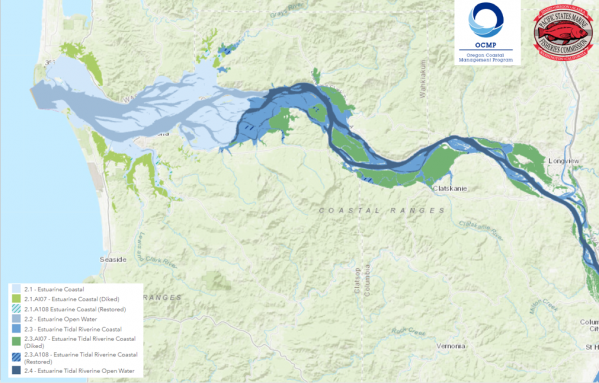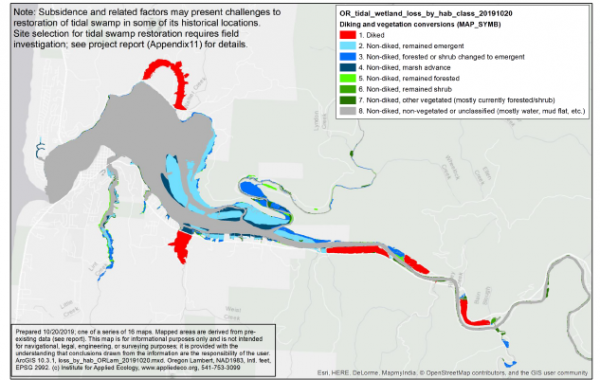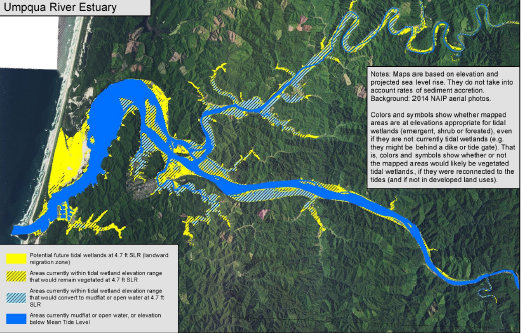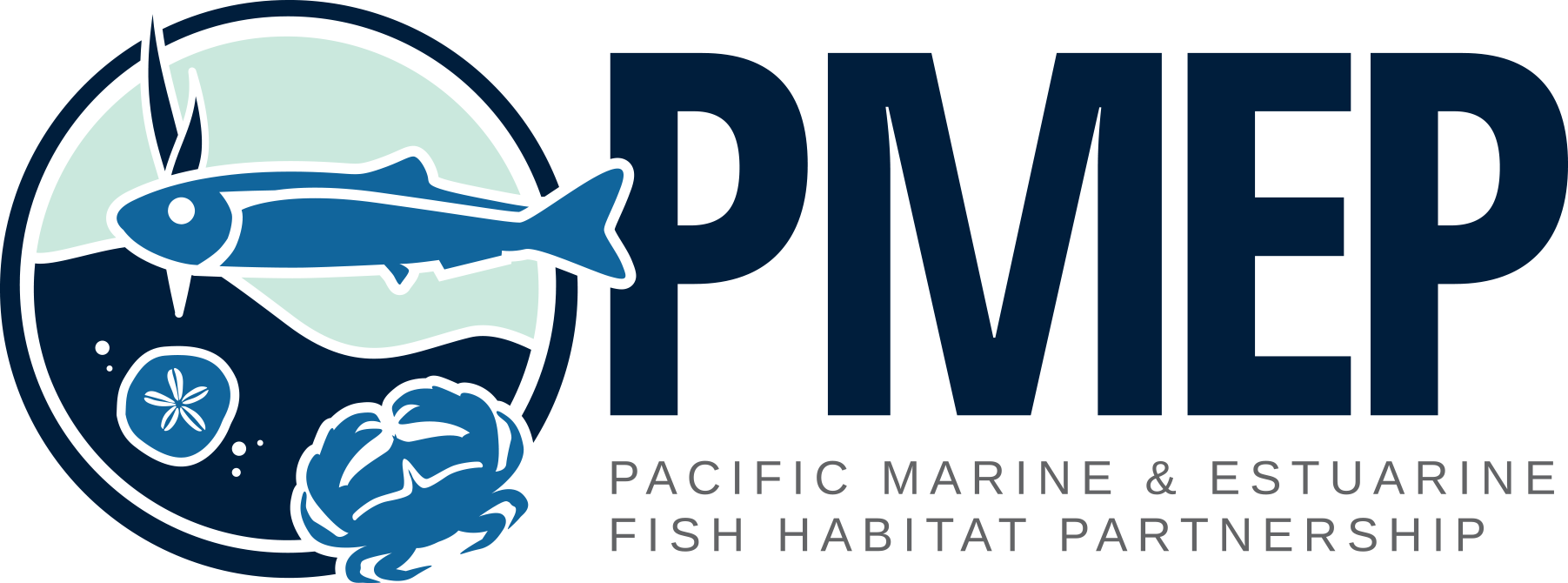Partner Data Products

Columbia River Estuary Coastal Marine and Ecological Classification Standard (CMECS)
Oregon Coastal Management Program, 2021
The goal of this effort was to produce estuary habitat information for the Columbia River Estuary, using the federally adopted Coastal and Marine Ecological Classification Standard (CMECS) version 4.0. This project is an extension of previous efforts by the Oregon Coastal Management Program (Lanier et al., 2014). While no new geospatial information was collected as part of this project, many recently collected or published data sets were utilized to derive CMECS habitat products.

Comparing Historical Losses of Tidal Wetlands on the Oregon Coast, USA
Institute for Applied Ecology, 2019
This study evaluated historical extent (prior to European settlement), current extent, and losses for each of the three major tidal wetland types (emergent, scrub-shrub, and forested) on the Oregon coast. The first study of its kind on the Oregon coast, it produced results vital to conservation and restoration planning, since these wetland types are often targets for restoration and each type supplies unique ecosystem services. The study included the coast's 15 largest estuaries; they contain 96.5% of the coast's historical tidal wetland area, so results are representative of the coast in general.

Modeling Sea Level Rise Impacts to Oregon's Tidal Wetlands
Institute for Applied Ecology, 2017
Tidal wetlands currently exist just at and above sea level, and healthy tidal wetlands are able to adapt to slow sea level changes. But if sea level rises too fast, tidal wetland plant communities may not be able to persist at their current locations. To survive, these plants may have to move to areas of higher elevation. These higher areas are called “landward migration zones” (LMZs); they are potential future tidal wetlands under sea level rise ("SLR"). This project modeled and prioritized these LMZs in Oregon.
